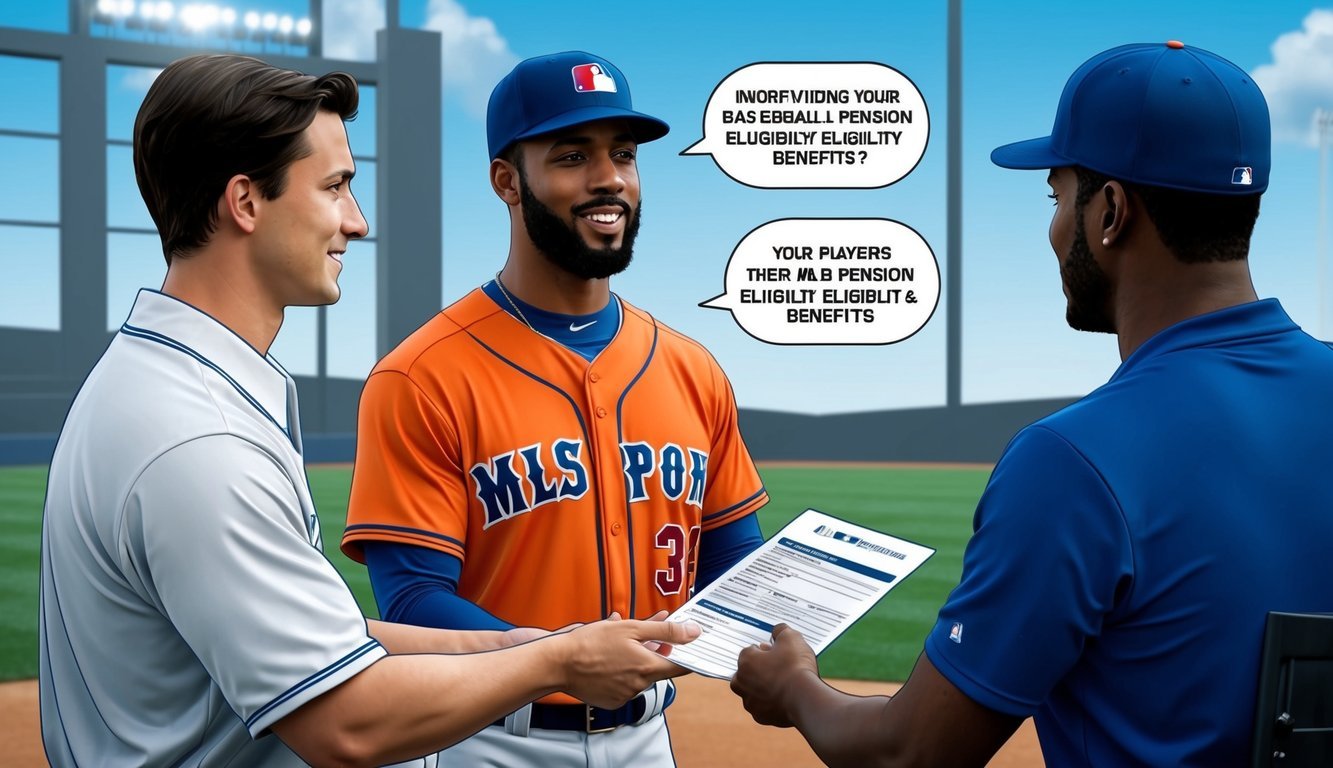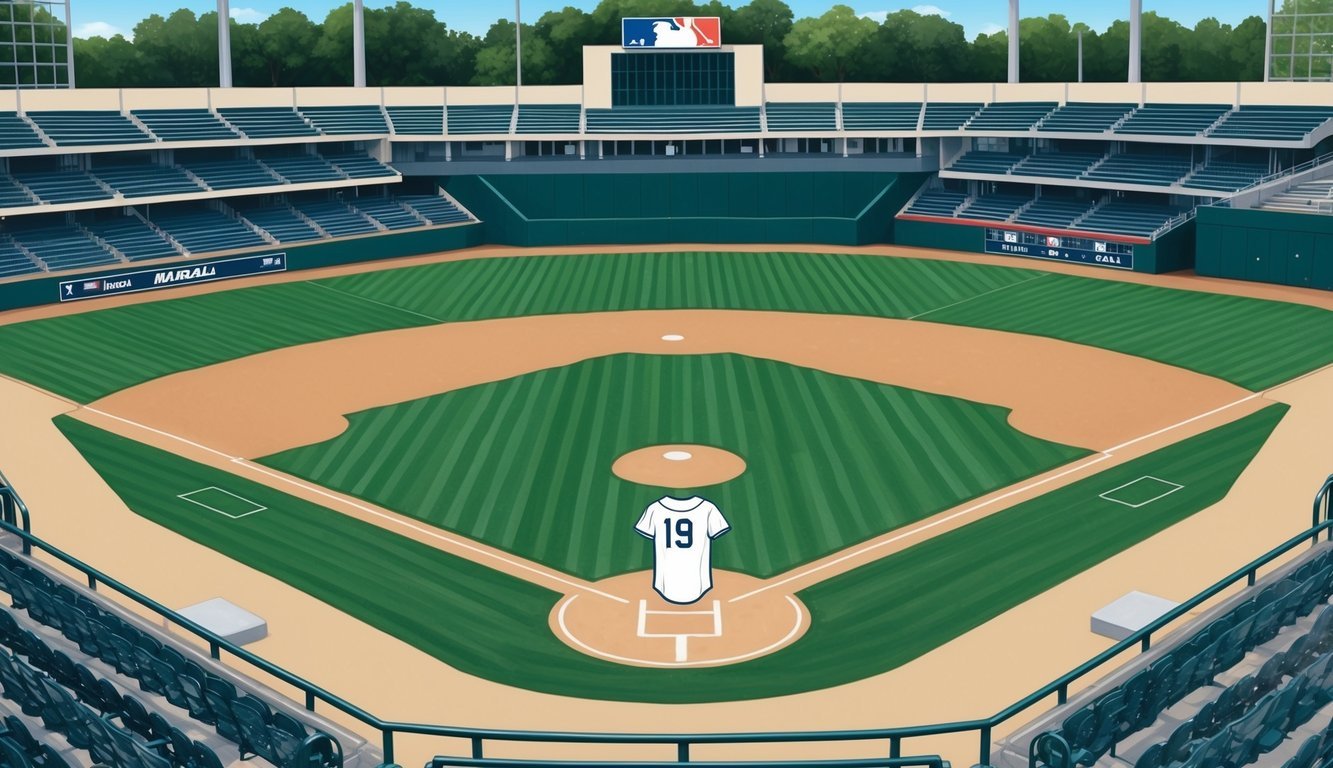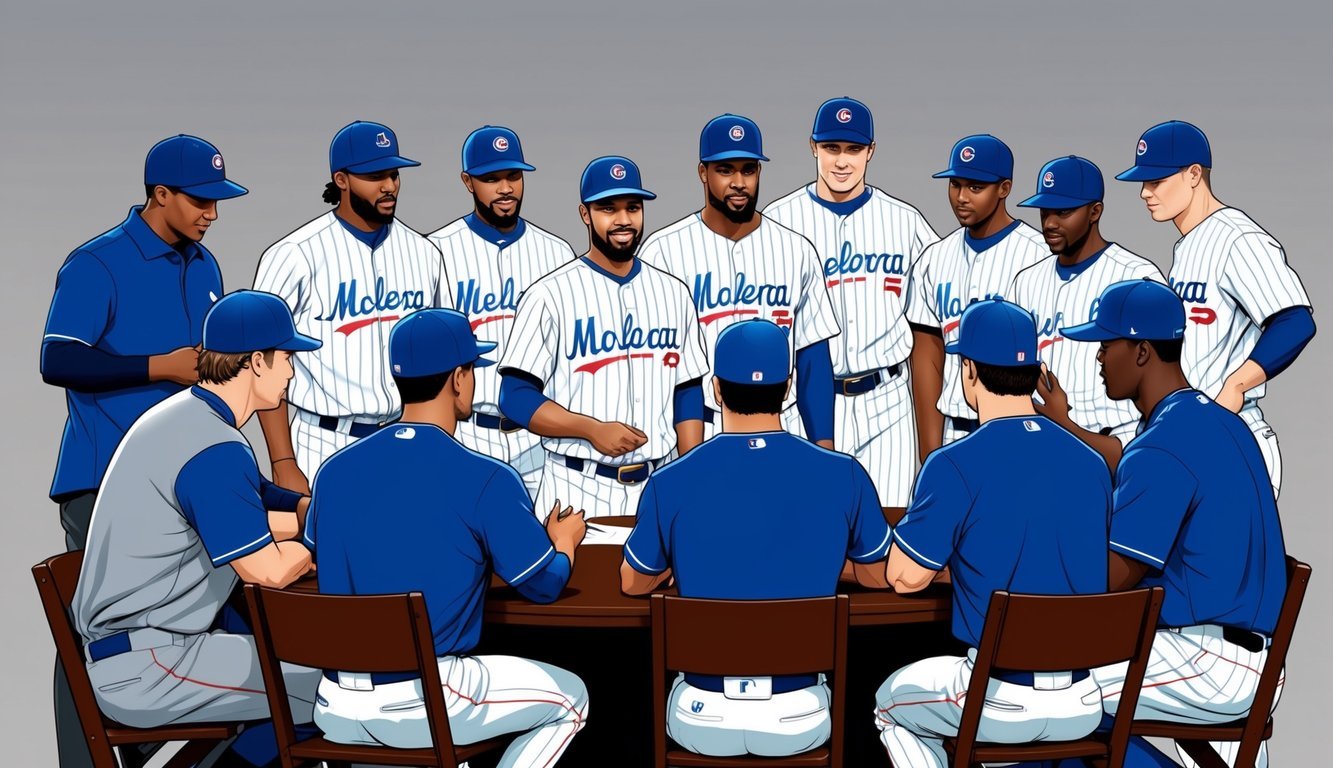Major League Baseball players spend years thrilling fans with their skills on the diamond.
But what happens when their playing days are over? The MLB pension plan provides financial security for retired players, ensuring they can enjoy life after baseball.
Players can qualify for the MLB pension after just 43 days on an active roster, with benefits increasing based on years of service. This generous system allows even those with short careers to receive some retirement support.
For players who reach the coveted 10-year mark, the pension can provide up to $230,000 annually.
The MLB pension plan has evolved over time, reflecting changes in the sport and player needs.
It now includes options for disability pensions and special provisions for pre-1980 players.
This comprehensive approach helps safeguard the financial future of those who have contributed to America’s pastime, allowing fans to enjoy the game knowing their favorite players will be taken care of long after they hang up their cleats.
Understanding MLB Pensions
MLB pensions provide financial security for players after their careers end.
The system rewards longevity and service time, with benefits increasing based on years played.
History of the MLB Pension Plan
The MLB pension plan dates back to 1947 when players first negotiated retirement benefits.
Initially, eligibility required 5 years of service.
In 1980, this changed to just 43 days on an active MLB roster.
The plan has evolved significantly over time.
Benefits have increased, vesting periods shortened, and coverage expanded.
Today’s players enjoy more comprehensive pension options than their predecessors.
Recent improvements include better healthcare coverage and increased minimum benefits.
The Players Association continues to advocate for enhancements to the pension system during collective bargaining negotiations.
Key Components of Pension Plans
MLB pension benefits are based on service time.
Players with 43 days receive a minimum annual pension of $6,875 at age 62.
This increases with more service time.
Full pension eligibility requires 10 years of MLB service.
These players can receive up to $275,000 annually at age 62.
Benefits can start earlier, but at a reduced rate.
The plan includes a vesting schedule.
Players become partially vested after 3 years and fully vested at 5 years.
This protects their accrued benefits even if they leave MLB.
Additional features include survivor benefits for players’ families and cost-of-living adjustments to maintain purchasing power over time.
Eligibility and Benefits

MLB players can qualify for pension benefits based on their service time in the major leagues.
The structure of retirement benefits increases with years played, providing financial security for retired players.
Qualifying for MLB Pension
Players become eligible for MLB pension after just 43 days of service time on an active roster.
This relatively low threshold ensures that even brief stints in the majors can lead to future benefits.
For full pension eligibility, players need to accumulate 10 years of service time.
Service time accrues daily during the regular season.
A full year of service equates to 172 days on the active roster or disabled list.
Players who debuted before 1980 face different eligibility requirements.
The Structure of Retirement Benefits
MLB pension benefits increase with years of service.
As of 2024, the annual pension amounts at age 62 are:
- 43 days of service: $6,875
- 1 year: $27,500
- 5 years: $137,500
- 10 years: $275,000
Players can start receiving benefits at age 45, but payments are reduced.
Waiting until 62 maximizes the benefit amount.
The pension plan provides a stable income stream for former players after their careers end.
MLB’s pension system is considered one of the most generous in professional sports.
It helps ensure that even players with shorter careers can receive some financial support in retirement.
The MLB Pension Program Structure

The MLB pension program provides significant financial benefits to players based on their service time and earnings.
It utilizes a formula to calculate pension amounts and considers players’ highest-paid seasons.
The Pension Formula
The MLB pension formula rewards longevity in the league.
Players become eligible after just 43 days of service, receiving a minimum annual pension of $34,000.
As service time increases, so do the benefits.
Those with one year of MLB service qualify for $27,500 annually.
The real payoff comes with extended careers.
Players reaching 10 years of service can receive up to $275,000 per year in retirement.
This substantial sum reflects the league’s commitment to supporting long-term players.
Annual Pension and Salary Relation
A player’s annual pension is closely tied to their MLB earnings.
The formula takes into account a player’s three highest-paid seasons, using their average annual salary from those years.
This approach ensures that star players who commanded top salaries during their prime years receive proportionally higher pensions.
It also provides a safety net for those who may have had shorter but lucrative careers.
The MLBPA negotiates pension terms with MLB, continually working to improve benefits for players.
As of 2024, the maximum annual pension benefit stands at $230,000 for those with at least 10 years of service and 1,000 days on an MLB roster.
Pensions for Non-Players

The MLB pension system extends beyond just players, offering benefits to other key personnel in the baseball world.
Coaches, managers, and trainers also have access to pension plans, while a dedicated committee oversees the entire program.
Pensions for Coaches, Managers, and Trainers
Coaches, managers, and trainers in Major League Baseball are eligible for pension benefits, though their plans differ from those of players.
These non-player personnel typically need to accumulate service time to qualify for pension benefits.
The pension amount often depends on years of service and position held.
For example, a long-time manager might receive a higher pension than a first-year coach.
MLB recognizes the vital role these staff members play in the sport’s success.
Their pension plans aim to provide financial security after retirement, much like the players’ plans.
Additionally, MLB has implemented various initiatives to enhance the overall benefits package for these essential staff members.
For example, the inclusion of perks such as Astros season ticket benefits demonstrates the league’s commitment to fostering a sense of community and appreciation among all personnel associated with the teams.
By investing in their well-being, MLB ensures that those who contribute to the game’s success are recognized and rewarded appropriately.
Pension Committee and its Role
The MLB Pension Committee plays a crucial role in managing and overseeing the pension plans for both players and non-players.
This committee includes representatives from team owners and the players’ union.
The committee’s responsibilities include:
- Reviewing and updating pension policies
- Ensuring fair distribution of benefits
- Managing pension fund investments
They work to maintain the financial health of the pension system, making adjustments as needed to keep it sustainable for future retirees.
The committee also addresses any disputes or issues related to pension benefits, acting as a mediator between the league and beneficiaries.
MLBPA’s Role in Pension Benefits

The Major League Baseball Players Association (MLBPA) plays a crucial role in securing and managing pension benefits for MLB players.
Through collective bargaining and ongoing negotiations, the MLBPA works to ensure players receive comprehensive retirement and healthcare coverage.
Negotiating Player Benefits
The MLBPA serves as the primary advocate for players’ financial interests, including pension benefits.
During negotiations with MLB team owners, the association pushes for improved retirement packages and deferred compensation plans.
These efforts have resulted in one of the most robust pension systems in professional sports.
Players become eligible for pension benefits after just 43 days of major league service time.
Those with 10 or more years of service can receive annual payments of up to $215,000.
The MLBPA also negotiates for lifetime medical coverage, ensuring players have access to quality healthcare long after their playing days are over.
Impact of Collective Bargaining Agreements
Collective bargaining agreements (CBAs) between the MLBPA and MLB owners shape the landscape of player benefits.
These agreements are typically negotiated every few years.
They often include updates to pension plans and other retirement benefits.
Recent CBAs have expanded pension eligibility to include more players, increased benefit amounts, and improved healthcare options.
The MLBPA’s bargaining power has led to the creation of a pension fund managed by a joint board of player and management representatives.
Through collective bargaining, the MLBPA has also secured additional financial support for former Negro Leagues players.
This expansion of benefits includes those who played fewer than four seasons.
